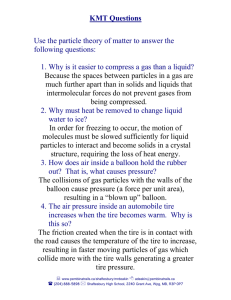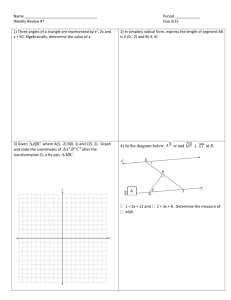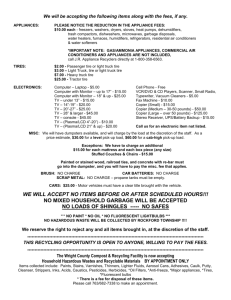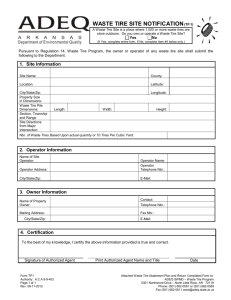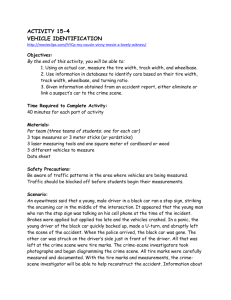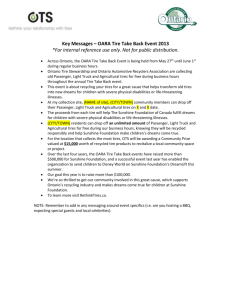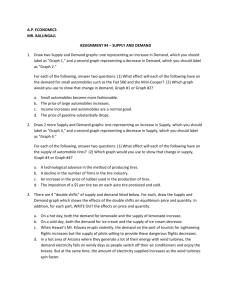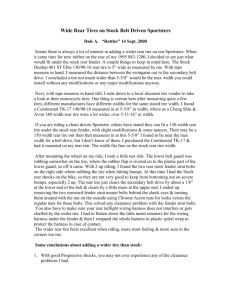x 100 - CPalms
advertisement
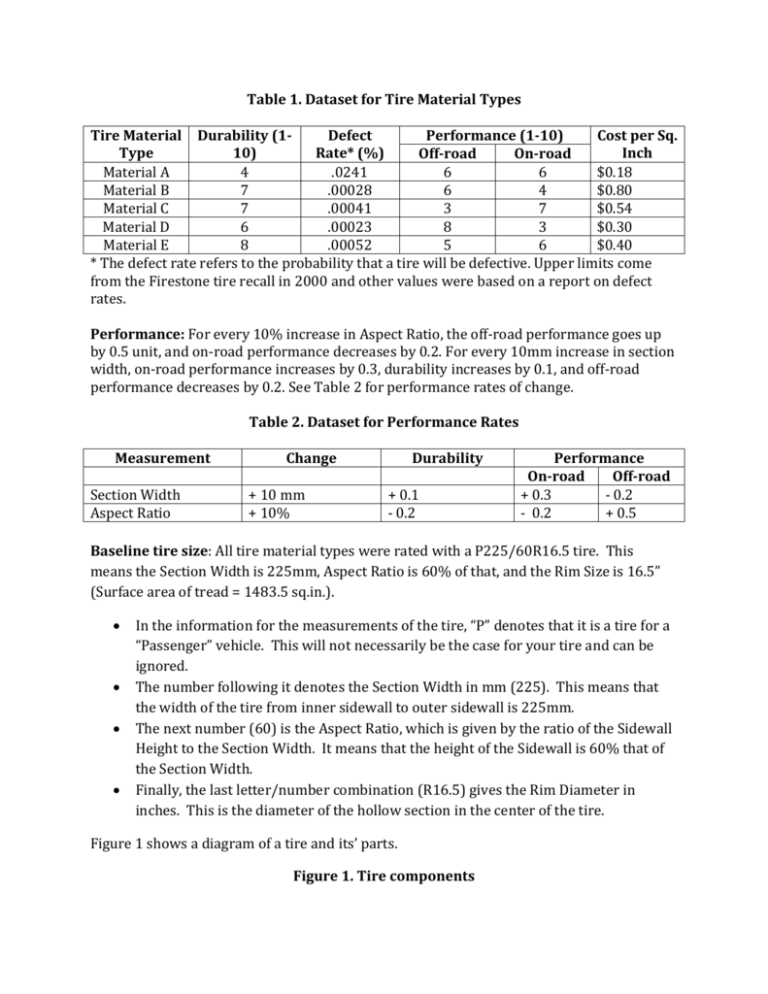
Table 1. Dataset for Tire Material Types Tire Material Durability (1Defect Performance (1-10) Cost per Sq. Type 10) Rate* (%) Inch Off-road On-road Material A 4 .0241 6 6 $0.18 Material B 7 .00028 6 4 $0.80 Material C 7 .00041 3 7 $0.54 Material D 6 .00023 8 3 $0.30 Material E 8 .00052 5 6 $0.40 * The defect rate refers to the probability that a tire will be defective. Upper limits come from the Firestone tire recall in 2000 and other values were based on a report on defect rates. Performance: For every 10% increase in Aspect Ratio, the off-road performance goes up by 0.5 unit, and on-road performance decreases by 0.2. For every 10mm increase in section width, on-road performance increases by 0.3, durability increases by 0.1, and off-road performance decreases by 0.2. See Table 2 for performance rates of change. Table 2. Dataset for Performance Rates Measurement Section Width Aspect Ratio Change + 10 mm + 10% Durability + 0.1 - 0.2 Performance On-road Off-road + 0.3 - 0.2 - 0.2 + 0.5 Baseline tire size: All tire material types were rated with a P225/60R16.5 tire. This means the Section Width is 225mm, Aspect Ratio is 60% of that, and the Rim Size is 16.5” (Surface area of tread = 1483.5 sq.in.). In the information for the measurements of the tire, “P” denotes that it is a tire for a “Passenger” vehicle. This will not necessarily be the case for your tire and can be ignored. The number following it denotes the Section Width in mm (225). This means that the width of the tire from inner sidewall to outer sidewall is 225mm. The next number (60) is the Aspect Ratio, which is given by the ratio of the Sidewall Height to the Section Width. It means that the height of the Sidewall is 60% that of the Section Width. Finally, the last letter/number combination (R16.5) gives the Rim Diameter in inches. This is the diameter of the hollow section in the center of the tire. Figure 1 shows a diagram of a tire and its’ parts. Figure 1. Tire components a a = Sidewall Height b = Rim Diameter b c = Section Width Aspect Ratio = 𝑆𝑖𝑑𝑒𝑤𝑎𝑙𝑙 𝐻𝑒𝑖𝑔ℎ𝑡 𝑆𝑒𝑐𝑡𝑖𝑜𝑛 𝑊𝑖𝑑𝑡ℎ x 100 c Helpful equation for new qualities of durability and performance, denoted by “Quality” (Q): 𝛼 Qn = Qo + 10 (𝑆𝑊 − 225) + 𝛽 (AR – 60) 10 Qn = new value of quality (i.e., durability, performance) Qo = original value of quality α = increment of change with regard to Section Width (e.g., durability changes by 0.1) SW = New value of Section Width (200, 265, or 330) β = increment of change with regard to Aspect Ratio (e.g,. durability changes by -0.2 per) AR = New value of Aspect Ratio (45 or 85) Note: The conversion of inches to millimeters is 1 inch = 25.4 millimeters
